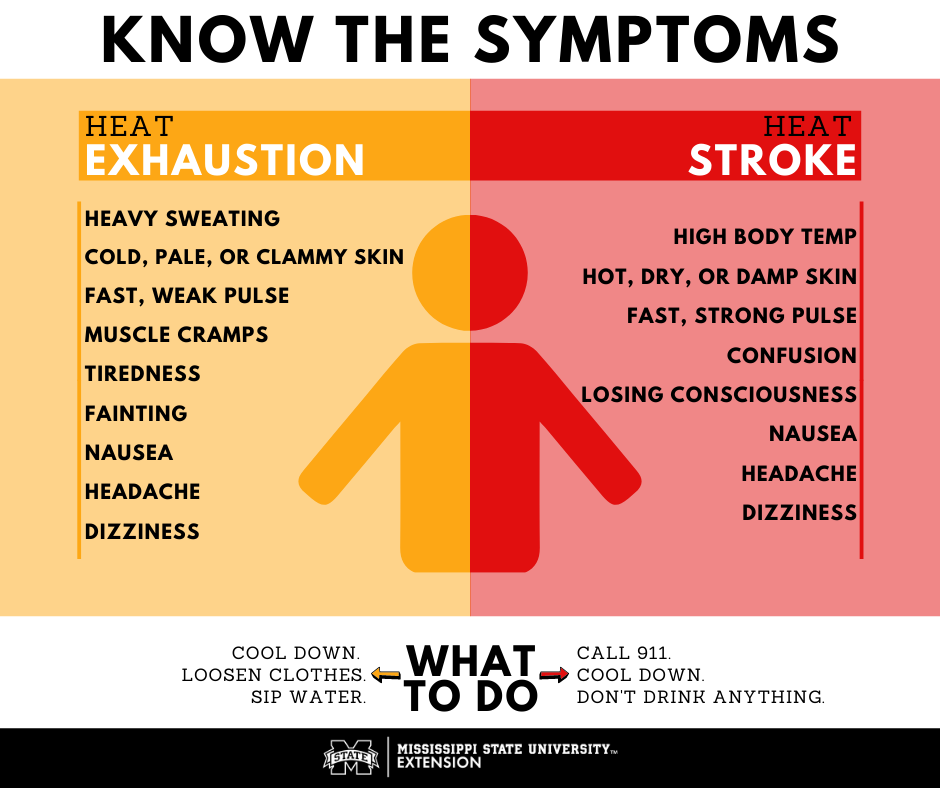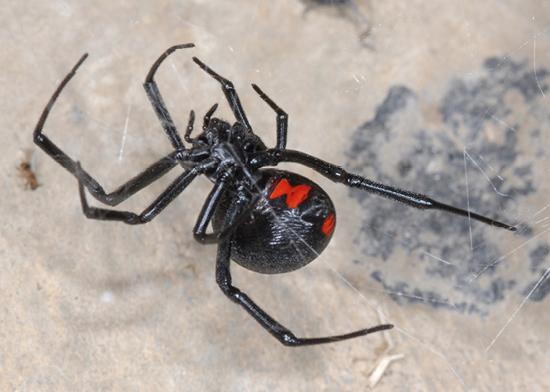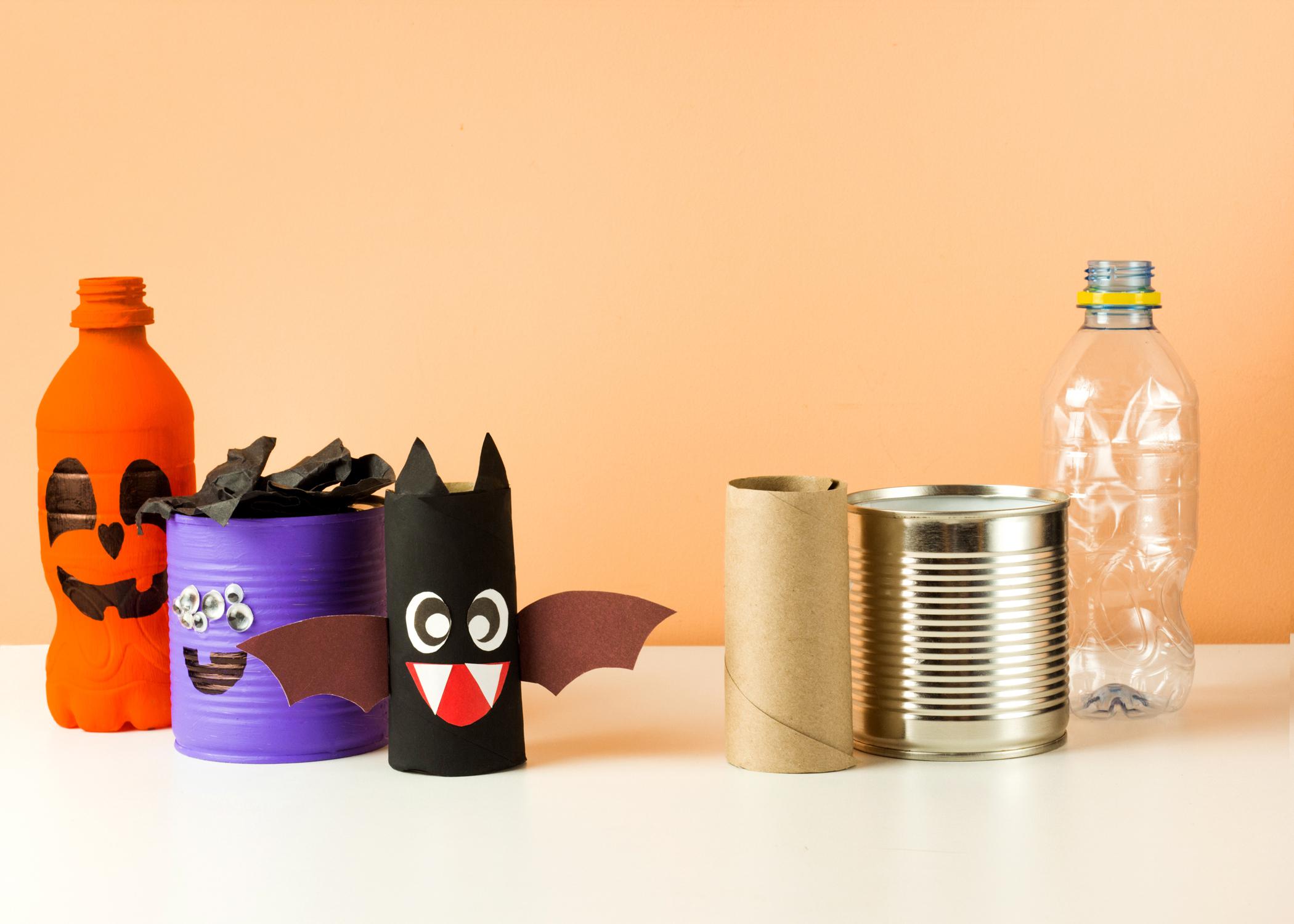How to Recognize Heat-Related Illness

It’s hot! And the heat isn’t just uncomfortable, it can be dangerous.
If you think you are overheated, immediately get to a cool place and begin lowering your temperature by drinking water and applying cool, wet cloths to your body or taking a cool shower.
Heat-related illness can be life threatening. So, it’s important to know what to look for in yourself or someone else and treat it right away. The symptoms of heat exhaustion and heat stroke are similar. Both are serious conditions, but in the case of a heat stroke, you need to get immediate medical attention.
Heat exhaustion
People with heat exhaustion will have cool, moist skin and a fast, weak pulse. Other symptoms include heavy sweating, paleness, muscle cramps, tiredness, dizziness, weakness, headache, fainting, and nausea or vomiting.
Treatment
Move to the shade or an air-conditioned environment. Sip water or a sports drink. Do not drink alcohol. Loosen clothing. Place cool, wet towels on the body. Or take a cool shower. Get medical attention right away if symptoms worsen, don’t go away in 1 hour, or vomiting occurs.
Heat exhaustion can happen after being in high heat for several days and not staying hydrated. Left untreated heat exhaustion can progress into a heat stroke that can result in death.
Heat stroke
People with heat stroke can have hot, red skin that can be dry or damp. Other symptoms include a body temperature of 103 degrees F or higher, a fast and strong pulse, throbbing headache, dizziness, nausea, confusion, and loss of consciousness.
Treatment
Call 911 immediately. Move the person to a shady or air-conditioned area. Cool the person with a water hose, cool shower, bath or wet cloths. Do not let them drink anything.
Heat stroke can progress in a matter of minutes, causing permanent disability or death. During a heat stroke, the body’s temperature can rise to dangerous levels in 10 to 15 minutes. This can cause swelling of internal organs, including the brain.
Heat cramps
Heat cramps are a milder form of heat-related illness. People who sweat heavily during exercise or strenuous physical activity are prone to heat cramps. Symptoms include heavy sweating during strenuous activity and muscle cramps or spasms, usually in the arms, legs and abdomen.
Treatment
Stop all activity and sit in a cool place. Drink water, clear juice, or a sports drink. Wait a few hours after cramps stop to return to physical activity. Get medical attention immediately if cramps last longer than 1 hour.
Heat cramps can develop into heat exhaustion if not treated promptly.
Additional factors can make some people more susceptible to heat-related illness.
Age. Babies and children younger than 4 have underdeveloped body systems and can’t regulate body temperature as efficiently. Adults over 65 may not be able to regulate temperature as well because of medications, illness, or other factors.
Medications. Drugs used to treat high blood pressure, heart problems, allergies, depression, and other conditions can affect your body’s ability to stay hydrated and efficiently cool itself.
Weight. Excess weight raises your core body temperature and makes it harder for your body to regulate your temperature.
Steps to Prevent Heat-Related Illness
Stay hydrated. Drink plenty of water. Sports drinks can replace salt and minerals lost in sweat. Avoid alcohol, high-sugar drinks, and very cold drinks.
Wear lightweight, light-colored, loose-fitting clothing. Tight clothing doesn’t allow sweat to evaporate properly and can cause you to overheat.
Avoid outdoor activities in the hottest part of the day. Do yard work or exercise when it is coolest – in the morning and evening.
Eat cool, light food. Hot, heavy meals raise your body temperature.
Sunburn is also a heat-related illness. Learn more about sunburn, how to protect yourself and your family, and what to do if you do get sunburned on the U.S. Centers for Disease Control and Prevention website.
Extension Publication 2430, “Disaster Relief: Tips for Preventing Heat-Related Illness” has more information about preventing and treating heat-related illnesses.
Learn more about how to stay safe in the sun in Extension Information Sheet 1524, “Sun Sense.”
For more information about heat-related illnesses and how to recognize and treat them, visit the U.S. Centers for Disease Control and Prevention website.
Subscribe to Extension for Real Life
Fill in the information below to receive a weekly update of our blog posts.









